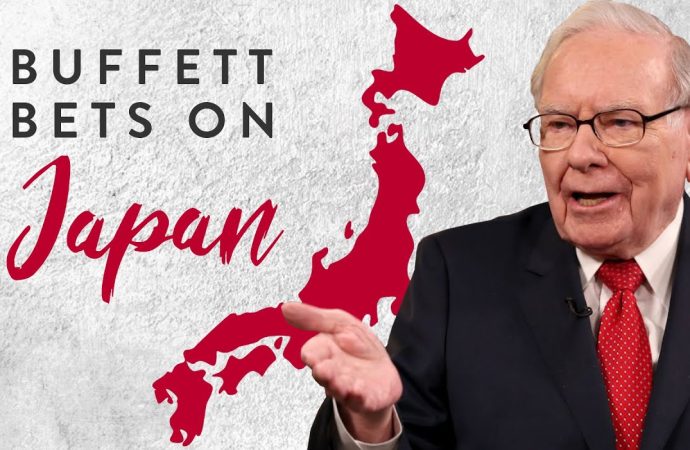Introduction Warren Buffett Japan moves have grabbed global attention, as the legendary investor’s Berkshire Hathaway expands its stakes in the five major trading houses. By increasing its holdings in companies like Itochu, Mitsubishi, Mitsui, Sumitomo, and Marubeni, Buffett signals strong confidence in Japan’s diversified conglomerates. These trading houses, known locally as sogo shoshas, play vital
Introduction
Warren Buffett Japan moves have grabbed global attention, as the legendary investor’s Berkshire Hathaway expands its stakes in the five major trading houses. By increasing its holdings in companies like Itochu, Mitsubishi, Mitsui, Sumitomo, and Marubeni, Buffett signals strong confidence in Japan’s diversified conglomerates. These trading houses, known locally as sogo shoshas, play vital roles in industries ranging from energy to food. As Buffett boosts his Japan bets, investors are watching closely to see how this strategy could shape Berkshire’s future returns. This article explores the background, reasons, and potential impact of these big moves.
Background on Berkshire’s Japan Strategy
Berkshire Hathaway first entered Japan in late 2019, quietly acquiring more than 5 percent of each of the five top trading houses through its National Indemnity unit. By March 2025, filings showed Buffett had raised those stakes further, owning roughly 7.4 percent of each firm. Recent data indicate his holdings now sit around 9 to 10 percent in some cases, making Berkshire one of the largest shareholders in these global trading powerhouses. Buffett’s approach reflects his value-investing style: buying solid businesses at attractive prices and holding for the long term.
Why Buffett Favors Japanese Trading Houses

Image by: Yandex.com
Buffett sees several advantages in these sogo shoshas:
- Diversification across sectors: Each trading house operates in dozens of industries—energy, metals, food, chemicals, and more. This broad base helps cushion against downturns in any single market.
- Strong cash flows and dividends: These firms generate steady cash and often return capital to shareholders via dividends and share buybacks. For an investor focused on long-term income, that is a major draw.
- Favorable valuations: Compared to U.S. peers or other global conglomerates, Japanese trading houses have traded at modest price-to-book ratios. Buffett has noted that their stocks looked “amazingly cheap” when he first studied them.
- Stable management and governance: Long histories, conservative financial policies, and reputations for reliability make these companies appealing to Berkshire, which values disciplined leadership.
Combined, these factors align with Buffett’s criteria: simplicity, predictability, and a margin of safety.
How the Stakes Have Grown
Below is a snapshot of Berkshire’s ownership in each trading house as of the latest filings:
- Itochu: 8.53 percent
- Marubeni: 9.30 percent
- Mitsubishi: 9.67 percent
- Mitsui: 9.82 percent
- Sumitomo: 9.29 percent
Since those March 17, 2025 regulatory filings, Berkshire has continued adding shares when prices dipped, indicating a willingness to raise its Japan exposure up toward the 9.9 percent limit.
Timeline of Key Investments
- September 2019–August 2020: Initial purchases exceed 5 percent in each trading house.
- March 17, 2025: Filings show 7.4 percent ownership in all five firms.
- Mid-2025: Stakes rise further, with some nearing 10 percent.
This steady ramp-up reflects Buffett’s patient capital deployment when market conditions align with his value criteria.
Market Reaction and Investor Sentiment
Buffett’s moves prompted a wave of interest among global and domestic investors. Following news of his increased stakes:
- Stock price gains: Shares of the trading houses saw modest upticks as investors viewed Buffett’s purchases as a vote of confidence.
- Retail investor inflows: Japanese individual investors, inspired by Buffett’s endorsement, began adding these names to their portfolios.
- Analyst upgrades: Several brokerages raised price targets, citing the stability of trading house earnings and support from a heavyweight shareholder.
Despite short-term volatility, many observers view the endorsement as validation of the sector’s long-term prospects.
The Business Models of Sogo Shoshas
Understanding why these firms matter helps explain Buffett’s interest:
- Global trading networks: They connect suppliers and buyers across continents, securing raw materials and finished goods.
- Strategic investments: They hold stakes in industrial projects worldwide—from mining operations in Australia to power plants in Asia.
- Commodity market expertise: They manage complex logistics, hedging, and financing for energy and metal flows.
- Value-added services: They offer financing, risk management, and supply-chain solutions, enhancing margins beyond simple trading.
This combination of services and reach creates durable revenue streams that appeal to long-term investors.
Risks and Challenges
No investment is without risk. For Berkshire’s Japan holdings, key concerns include:
- Commodity price swings: Trading firms can suffer when oil, metals, or agricultural prices move sharply.
- Currency fluctuations: Their global operations expose earnings to yen strength or weakness.
- Geopolitical tensions: Trade disputes or sanctions could disrupt supply chains.
- Regulatory shifts: Environmental rules or market reforms in host countries may impact profitability.
Buffett’s approach—buying at discounts and focusing on financial resilience—aims to mitigate these risks over a full market cycle.
Outlook for Buffett’s Japan Strategy
Looking ahead, several scenarios could play out:
- Further stake increases: Buffett may push toward the 9.9 percent cap in each firm if shares remain attractive.
- Dividend growth: As global demand for commodities rebounds, payouts could rise.
- Portfolio rebalancing: Berkshire could sell other positions to free capital for top-quality assets like these trading houses.
- Long-term hold: Consistent with Buffett’s style, these stakes may stay in Berkshire’s books “forever,” barring extreme valuation shifts.
Given Buffett’s track record, many expect these Japan holdings to remain central to Berkshire’s investment mix for years.
Impact on Global Investing
Buffett’s Japan bets underscore a broader trend: search for value in mature, stable markets. Other large funds have followed suit:
- Pension and sovereign wealth funds adding sogo shoshas to diversify away from U.S. equities.
- Retail platforms offering Japan trading house ETFs, spurred by retail enthusiasm.
- Cross-border joint ventures as domestic companies seek global finance partners.
Buffett’s move thus may reshape how international capital views Japan’s corporate giants.
Conclusion
Warren Buffett’s expansion into Japan’s major trading houses highlights his enduring quest for value, stability, and income. By boosting stakes in Itochu, Marubeni, Mitsubishi, Mitsui, and Sumitomo to nearly 10 percent each, Berkshire Hathaway places a strong bet on companies with diversified operations, robust cash flows, and attractive valuations. Investors worldwide have taken note, driving renewed interest in sogo shosha stocks. While market and commodity risks remain, Buffett’s patience and financial discipline suggest these holdings will play a lasting role in his portfolio. As he continues to eye opportunities, his Japan strategy may serve as a model for value seekers everywhere. Ultimately, Buffett’s bold Japan moves reflect confidence in long-term growth and the timeless appeal of buying quality businesses at fair prices.

















Leave a Comment
Your email address will not be published. Required fields are marked with *